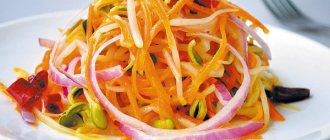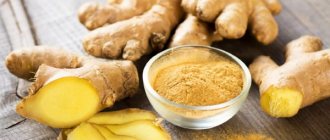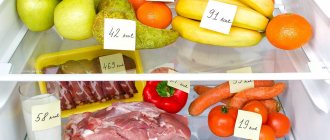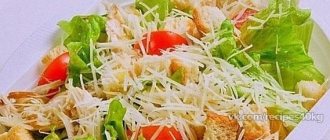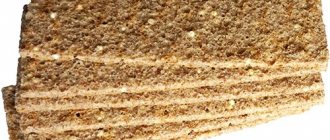Cottage cheese is very healthy, it contains vitamins, minerals, beneficial bacteria, etc.
It is recommended to be included in the menu for adults, children, the elderly and sick people.
The question of whether it is possible to eat cottage cheese on a diet while losing weight is quite relevant.
According to nutrition experts, it is even recommended to include the product in the menu; the main thing is to know how to choose it correctly, when to eat it and what to combine it with.
What the experts say
According to nutritionists, cottage cheese is a valuable product that can itself become the basis for a diet. There are various methods for losing weight using fermented milk products. With regular consumption, the functions of the gastrointestinal tract are normalized, the condition of the skin, hair, and nails improves, thanks to the high calcium content.
Expert opinion
Evgeniy Kislitsa
Practicing surgeon. Certified massage master. Two-time vice-champion and heavyweight champion of regional kettlebell lifting competitions.
Cottage cheese is especially useful for those people who have problems with the growth of bone and cartilage tissue, persons under 24-25 years of age (due to the still active growth of bone tissue), athletes involved in heavy and contact sports (stimulates the growth of bone and cartilage tissue, allows you to accelerate the processes of restoration of these tissues after physical exertion and/or injury). It is strongly recommended to eat cottage cheese during recovery from bone fractures or damage to the joint apparatus (especially cartilage). Because due to the high calcium content and the presence of vitamin D in the product, the restoration of damaged tissues is accelerated. Mature and elderly people, regardless of the severity of physical activity, are recommended to regularly eat cottage cheese. After all, it not only allows bone tissue to recover faster, but also prevents the leaching of calcium from the bones, which is necessary for the formation and maintenance of the strength of bone beams (they form the structure of the bone). The indication is justified by the physiological characteristics of the body at this age, when all people experience a decrease in the calcium content in the bones, causing them to become fragile, easily injured and broken. At the same time, at this age, the ability of bones to recover decreases, and the activity of their resorption (splitting) processes increases. Calcium prevents bone resorption processes at any age.
Some people who are losing weight don’t know how to eat it correctly to lose weight. To ensure that the product brings only benefits, experts advise following the following rules:
- Use only fresh product. Old cottage cheese not only loses its beneficial properties, but can also cause food poisoning or the development of an infectious disease, since microorganisms actively multiply in it.
- Give preference to cottage cheese with a fat content of 1.8 to 5%.
- It is not recommended to combine lactic acid products with sugar. It is better to use sour cream, yogurt (low fat), honey, or any plant products.
- Eat milk concentrate 1-2 times a day.
- Before consumption, make sure you are not allergic to lactose.
- It is better to eat cottage cheese in the first half of the day.
If a person adheres to these recommendations, he will be able to normalize his weight and improve his health.
Important! To absorb calcium from dairy products, vitamin D is necessary. In the body, it is produced in sufficient quantities under the influence of ultraviolet radiation. The natural source of ultraviolet radiation is sunlight. Therefore, in order for the microelement to be maximally absorbed by tissues, it is necessary to regularly go outside and take walks in the fresh air. Complexes will be an alternative source of vitamin D, but the availability of this substance is lower in them. Therefore, the best option is to be outside.
Anna Moroz, trainer
According to a highly qualified trainer in fitness and bodybuilding, cottage cheese is not suitable for dinner if a person wants to lose weight. This is due to the fact that during sleep the body recovers, this process is accompanied by the production of somatropin (growth hormone). This substance promotes the breakdown of fat. Milk concentrate contains casein, which provokes an increase in insulin in the blood; this hormone inhibits the action of somatropin, as a result, fats burn more slowly. In addition, due to a decrease in the synthesis of somatotropin, the activity of restoration processes in tissues, especially muscles, decreases, and this leads to the fact that muscle growth proceeds more slowly and in smaller volumes than is possible with the recommended time consumption of cottage cheese. Therefore, it is better to eat this product during the day.
Yulia Bastrygina, nutritionist
According to a leading nutritionist, it is important to choose the right fermented milk product. Therefore, before purchasing, study the composition; it is recommended to buy a natural product. During the diet, it is better to avoid sweet curd products. The nutritionist advises purchasing cottage cheese with a fat content of 2 to 4%; it contains more nutrients and will not spoil your figure. High-quality milk concentrate cannot be cheap, so do not be tempted by tempting promotions, rather think about your goal. The optimal portion of cottage cheese for those losing weight is 200 g per day.
Selezneva Ksenia, nutritionist
A well-known nutritionist and gastroenterologist advises avoiding low-fat cottage cheese when losing weight. It has worse taste, it contains chemical additives (flavors, stabilizers, sweeteners), and sometimes trans fats. After eating it, a person feels even more hungry, since cottage cheese with zero fat content is saturated with carbohydrates, which are quickly absorbed, forcing the person to eat it again. And the salts in milk concentrate retain excess fluid, straining the heart and kidneys. Give preference to semi-fat cottage cheese (1.8-5%). It is more natural and contains beneficial substances. And in order not to gain weight by consuming it, just control the portion - no more than 200 g per day.
Be sure to check out:
Is it possible to eat corn while on a diet: benefits and harms? Get a complete set of proteins, fats and carbohydrates from Doshirak dietary products on a diet: is it possible to eat fast food products? Is it possible to eat soy sauce while on a diet: all the myths and truth
Calorie content, BJU
Cottage cheese (calorie content per 100 grams is calculated depending on the fat content) is considered one of the most popular fermented milk products.
Nutritional value of cottage cheese
The main ingredient in cottage cheese is the milk protein casein, which gives it its white color. This protein is absorbed more slowly and efficiently, while it helps restore and even build muscle mass, which is especially important for athletes. Interesting: 100 grams of cottage cheese contains the same amount of protein as two chicken eggs.
Cottage cheese. Calorie content and chemical composition.
Fermented milk product is low in carbohydrates, so it is often used in low-carb diets. Most of the carbohydrates in cottage cheese come from natural milk sugar and lactose and are an important component in the product, as they serve as a source of energy for the body.
Phosphorus in cottage cheese helps the body process fats and carbohydrates, and is also involved in the production of protein. Like calcium, it is important for the health of teeth and bones, paired with B vitamins, it helps to normalize the functioning of the human kidneys and nervous system. In addition, phosphorus helps balance acid levels in the body by acting as a natural alkalizing agent.
In addition to the energy and nutritional value of proteins, fats and carbohydrates, the product is rich in micro and macroelements, minerals and vitamins, which take an active part in the body's metabolic processes, and make it a complete and healthy food for any person.
The composition of cottage cheese per 100 grams of product is given in the table:
| Vitamins, mg per 100 g of product | Minerals, mg per 100 g of product | ||
| A | 42 | Calcium | 178 |
| IN 1 | 0,05 | Iron | 0,1 |
| AT 2 | 0,22 | Potassium | 218 |
| AT 3 | 1 | Magnesium | 16 |
| AT 6 | 0,12 | Sodium | 64 |
| AT 12 | 0,3 | Phosphorus | 129 |
| WITH | 0 | Iodides | 9 |
| D | 0,21 | Selenium | 9 |
| E | 0,23 | Zink | 0,5 |
Calorie content of fermented milk product
Cottage cheese (calorie content per 100 grams of product depends on the fat content in the raw materials from which the lactic acid product was made) contains the optimal amount of useful microelements. At the same time, the glycemic index of cottage cheese is quite low, about 30 units, so it is often used in medical and dietary nutrition. GI is an indicator of the effect of a food on blood sugar levels.
There are several groups:
- low GI from 0 to 55 units;
- average 56 – 69 units;
- high above 70 units.
This value, like that of cottage cheese, is comparable to the glycemic index of some green vegetables and unsweetened fruits, which makes it possible to consume it even for people suffering from diabetes.
However, it is worth remembering that when sugar, candied fruits, nuts and dried fruits are artificially added to a fermented milk product, the GI increases sharply. In addition to the fact that cottage cheese is completely absorbed by the body, it has no tissue or cellular structure and contains balanced protein.
A reference table of BZHU of different types of cottage cheese will give an idea of the nutritional value of the product:
| Indicators | Fat cottage cheese, 23% | Classic cottage cheese, 8% | Classic cottage cheese, 5% | Cottage cheese, 2% | Cottage cheese, 1% | Cottage cheese, 0% |
| Proteins, g | 9,55 | 15,0 | 17,2 | 18 | 16,3 | 16,5 |
| Fats, gr | 21,44 | 8,0 | 5 | 2 | 1 | 0 |
| Carbohydrates, g | 16,99 | 1,5 | 1,8 | 3,3 | 1,3 | 1,3 |
| Calorie content, kcal | 301,07 | 138,0 | 121 | 103 | 79 | 71 |
Benefits, harm, composition, energy value, contraindications
To understand how useful a lactic acid product is, you need to study its composition:
- Proteins, fats, carbohydrates (BJU).
- Retinol.
- Thiamine, riboflavin, vitamin B9.
- Vitamin C.
- A nicotinic acid.
- Iron.
- Calcium.
- Potassium.
- Magnesium.
- Unsaturated fats.
- Organic acids.
- Water.
- Saccharides, etc.
There are 4 types of milk concentrate: low-fat, semi-fat, full-fat, granular.
The energy value of each type is different:
- Low-fat cottage cheese (up to 1.8%) contains from 90 to 105 kcal per 100 g.
- Bold (from 1.8 to 9%) – from 135 to 160 kcal/100g.
- Fat (from 9 to 22%) – 230 kcal/100g.
- Grainy – 150 kcal/100g.
Beginners losing weight are interested in the question of which cottage cheese is better. If you want to get rid of extra pounds and improve your health, then choose a product with a fat content of 1.8 to 5%. It is healthier (calcium, vitamins, and minerals are absorbed faster), tasty, and will not cause fat accumulation (with moderate consumption). Cottage cheese with a fat content of 9% is also allowed for weight loss, the main thing is not to eat more than 150 g per day.
The fat content of milk concentrate affects its composition, for example, half-fat cottage cheese contains 16 g of proteins, 9 g of fat, 3 g of carbohydrates.
Fermented milk product has the following beneficial properties:
- Quickly absorbed.
- Accelerates metabolism and fat burning.
- Accelerates the processes of restoration of cells of the gastrointestinal tract.
- Stabilizes blood glucose levels.
- Being a source of protein, it allows you to maintain the balance of extra- and intracellular fluid, thereby preventing the development of many dangerous diseases, including the cardiovascular and urinary systems.
- Strengthens bones.
- Positively affects the functions of the cardiovascular and nervous systems.
- Strengthens the immune system.
- Maintains hemoglobin levels. Accelerates the formation of red blood cells (erythrocytes).
- Improves vision.
The grain and semi-fat product helps to lose weight and is suitable for feeding children, pregnant women, nursing women, the elderly, and sick people. And full-fat milk concentrate is suitable for building muscle mass. However, due to the high content of carbohydrates and fats in it, such a product must be consumed strictly within the portions determined for a specific weight, height and physical activity, otherwise you can gain not only muscle, but also excess fat tissue.
Despite the benefits of cottage cheese, it can be harmful:
- There is a risk of allergy if you are hypersensitive to lactose.
- With regular consumption of fatty foods (from 9%), the level of cholesterol increases and the likelihood of obesity or atherosclerosis increases. The latter leads to the formation of atherosclerotic plaques and the development of oxygen starvation in the tissues.
- Cottage cheese aggravates the patient’s condition with pathologies of the kidneys, gall bladder, and urolithiasis.
- Grainy and low-fat cottage cheese should not be eaten if there are gastrointestinal disorders.
- An expired product provokes intoxication. If the milk is poorly processed, the milk concentrate may be contaminated with pathogenic microbes (Escherichia coli).
Important! Only with proper and moderate consumption will cottage cheese bring benefits and speed up weight loss.
Expert opinion
Evgeniy Kislitsa
Practicing surgeon. Certified massage master. Two-time vice-champion and heavyweight champion of regional kettlebell lifting competitions.
Excessive consumption of fatty cottage cheese leads to the formation of atherosclerotic plaques on the walls of arterial vessels that carry oxygen-rich blood to the tissues. As a result, they do not receive the amount of oxygen necessary for correct functioning, and their “work” is disrupted. The condition can be chronic or acute. In the first case, the body adapts to the state of tissue hypoxia (lack of oxygen in them). And in order to compensate for oxygen transport, new vessels begin to form, supplying oxygen to the tissues. The acute condition is much more dangerous and can be life-threatening. In this case, the body’s tissues are not able to quickly adapt to working in hypoxic conditions and begin to die. A striking example is myocardial infarction. Also, atherosclerotic plaques lead to the formation of blood clots on the walls of blood vessels. In addition to the fact that a clot disrupts blood flow in the vessels, it can also break off and be transported through the bloodstream. When a blood clot reaches a vessel through which it cannot pass, it becomes blocked and acute tissue hypoxia develops, which leads to tissue death.
What determines the calorie content of cottage cheese?
It is advisable to know the caloric content of each product at least approximately, so as not to harm your health and keep yourself in shape.
In particular, the number of calories in this product can be calculated based on the fat content of this product.
There are legends about the beneficial properties of nettle, don’t you believe it? Read interesting information about this plant on our website. In this article, you can read how to cook chocolate cake in a Polaris multicooker.
I wonder what foods increase hemoglobin? Here: https://notefood.ru/pitanie/pravilnoe-pitanie/produktu-povucshayuschie-gemoglobin.html, you can read this information.
There is a direct relationship here - the higher the fat content, the higher the calorie content.
Cottage cheese is divided into three main types:
- regular fat content 12% has about 169 kcal;
- bold 5% – 142 kcal;
- low-fat cottage cheese 0.6% - 110 kcal.
Thus, the calorie content of the finished product is determined by the method of its preparation.
If full-fat and semi-fat cottage cheese involves the use of rennet enzymes, which significantly increases the number of calories, then low-fat cottage cheese is produced by the acid method as a result of lactic fermentation.
Low-fat product: myth and reality
The fat content of a low-fat product differs:
- Low-fat (0%): BZHU – 71 kcal/100g, proteins – 16.5 g, fats – 0 g, carbohydrates – 1.3 g.
- Low-fat (0.1%): BJU: B – 11.9 g, F – 0.1 g, U – 3.61 g, calorie content – 76 kcal.
- Nutritional value of low-fat cottage cheese (1%) – 80 kcal, B – 16.5 g, F – 1.1 g, U – 1.8 g.
- The energy value of a product with a fat content of 1.8% is 101 kcal, B - 18 g, F - 1.8 g, U - 3.3 g.
Quite popular for weight loss is cottage cheese, the fat content of which is 2%, it contains 103 kcal/100g, 18 g of proteins, 2 g of fat, 3.3 g of fat.
There are many myths about low-fat fermented milk products:
- Cottage cheese with 0% fat content does not contain lipids. All products (except green tea) contain a small amount of fat. Fats are necessary for the formation of a number of biologically active substances, the formation of cells and their functioning. Therefore, their deficiency causes much more harm to the body than excess.
- A low-fat product only brings benefits. Fats are useful for the normal functioning of the body; in their absence, the condition of the hair and skin deteriorates, and the functionality of the reproductive system of women is disrupted. Low-fat cottage cheese may contain chemical additives as well as artificial trans fats. With frequent use, metabolism is disrupted, immunity is weakened, and there is a risk of diabetes.
- Low-fat fermented milk product gives a feeling of fullness. In fact, after consuming it, a person feels hungry within a few minutes.
- A low-fat product contains protein. Its amount in this product is significantly less than in regular cottage cheese.
Low-fat cottage cheese is recommended for use for hypertension, as well as for people with high cholesterol concentrations to prevent atherosclerosis. Healthy people can afford milk concentrate with a fat content of 1.8-5%.
Attention! Trans fats are carcinogens – substances that provoke the development of malignant tumors. Therefore, it is strongly recommended to avoid consuming trans fats.
Everyone who is losing weight is interested in the question of how many calories are in low-fat cottage cheese
It is impossible to completely free “zero” cottage cheese from its most high-calorie component – fat. Nutritionists also object to this process because it may affect the digestibility of many elements of the product. Proponents of consuming fattier varieties of “young cheese” explain their preference precisely by their better digestibility and greater benefits. However, those who care about how many calories are in cottage cheese need to choose low-fat varieties. Typically, the energy value of “zero” cottage cheese ranges from 55-88 to 110 kcal per 100 g of product.
Curd
When dieting, it is not recommended to consume curd mass. Firstly, it contains more calories, and secondly, numerous chemical additives are used during its preparation, and poor-quality raw materials may be used, which significantly increases the risk of food poisoning or the development of an infectious disease.
High-quality cottage cheese is created on the basis of cottage cheese, butter, sugar, and dry fruits. The label indicates the composition, calorie content, and manufacturer's address. It is usually stored for about 3 days.
It contains beneficial bacteria, nutrients, vitamins, minerals, and organic acids. Its only drawback is its high calorie content.
Attention! If the shelf life of the curd mass is from 5 to 7 days, then you have a low-quality product that can cause poisoning, allergies and other disorders.
Is it possible to lose extra pounds?
Low-fat cottage cheese is found in almost all weight loss diets. This is due to the body’s need during a diet to replenish protein reserves, which this product is rich in.
A diet based on low-fat cottage cheese and green apples is easy to use, allows you to get rid of excess weight and cleanse the body of toxins. The recommended duration is 5 days and allows you to lose 2-3 kg during this time without harm to the body.
The fermented milk product replenishes the body's reserves of protein and beneficial microelements, and green apples, no less rich in vitamins and minerals, cleanse the intestines thanks to fiber.
Diet menu:
- low-fat cottage cheese – 250 g per day;
- green unsweetened apples – 1.5-2 kg per day;
- still water and unsweetened green tea – 1.5-2 liters per day.
You can use the diet no more than once a month, and its menu is perfect as a fasting day.
Find out about anti-cellulite cream on our website.
How to get rid of cellulite on the butt in the article. Causes, dangers and methods of combating cellulite at home.
Table of low glycemic index foods here.
How to use, should you eat at night and with what?
Doctors recommend eating cottage cheese in the morning and afternoon, as it takes a long time to break down (about 3 hours). However, many people feel hungry in the late afternoon. Then the question arises whether the product can be eaten in the evening. For dinner you are allowed to consume 2-3 tbsp. spoons of protein concentrate.
Not everyone who is losing weight knows whether they can take milk concentrate at night. A person can eat a small portion of the product 3-4 hours before going to bed. Otherwise, it will be difficult for him to fall asleep due to the feeling of heaviness. If you consume cottage cheese after the specified time, most of the carbohydrates from the product will turn into fat deposits.
Those losing weight are interested in the question of what to eat cottage cheese with. During the day it can be combined with honey, fresh and dry fruits, berries, vegetables, and herbs.
The question of what to eat milk concentrate with in the evening is quite relevant. A salad of cucumbers, tomatoes, paprika, cottage cheese, kefir, herbs and garlic will relieve hunger for a long time. At night, you can mix milk concentrate with honey, raisins, dried apricots, or make a curd and berry smoothie. The main thing is to eat 3 hours before bedtime and in a minimal portion.
You can eat low-fat cottage cheese at night, especially if you have already consumed a portion of a low-fat product during the day.
Where and how to buy cottage cheese?
It is advisable to buy cottage cheese in large and reputable stores that will value their reputation and monitor quality products. After all, when buying cottage cheese in the markets, you can never be sure that this product has undergone proper sanitary treatment, that it has been approved by the epidemiological service.
And you can never say with certainty exactly what fat content this cottage cheese is - you just have to take the seller’s word for it. At the same time, only pasteurized curds are supplied to store shelves, which can be eaten immediately without any additional processing. The same cottage cheese that is sold in markets, as a rule, cannot be processed and is not pasteurized.
And remember one more simple thing - never buy cottage cheese from someone else!
Not only may the product you purchased be of inferior quality, but it may also be a carrier of various bacteria. And then there will be no one to present claims to.
Diet dishes
You can prepare many delicious and low-calorie dishes from cottage cheese:
- Sandwiches:
- chop the greens;
- mix cottage cheese with sour cream (low fat);
- peel and crush a few cloves of garlic;
- add herbs and garlic to the curd mixture;
- Spread the mixture onto the diet bread and place a piece of tomato, cucumber or paprika on top.
- Curd and vegetable salad with avocado:
- pick Chinese cabbage with your hands;
- chop avocado, tomatoes;
- mix grainy cottage cheese with vegetables, spices, olive oil.
- Fruit salad with cottage cheese:
- cut peach, banana, kiwi;
- add cottage cheese, unsweetened yogurt to the fruit, stir.
- Casserole:
- mix chopped herbs with garlic, salt, pepper;
- add cottage cheese there, stir;
- grind hard cheese (low fat), add to the base;
- beat the whites until thick foam is obtained, mix with the remaining ingredients;
- Pour the mixture into a baking tray and bake until golden brown.
Cottage cheese goes well with many foods, the main thing is to choose low-calorie ingredients.
Important! Since cottage cheese is a protein product, its abuse leads to disruption of the kidney filtration apparatus even in healthy people. Those who have kidney pathologies can consume cottage cheese only if they strictly adhere to the portions recommended by the doctor.
You may also be interested in: How to properly consume chia seeds for weight loss
Dairy products for weight loss
Main conclusions
As you can see, cottage cheese can be consumed when losing weight, the main thing is to follow the following rules:
- Choose a fresh, natural product.
- Give preference to semi-fat lactic acid concentrate from 1.8 to 5%, it will bring more benefits than low-fat.
- Eat cottage cheese 1 or 2 times a day, no more than 200 g.
- Eat cottage cheese and dishes made from it in the first half of the day.
- In the evening, consume the lactic acid product 3-4 hours before bedtime.
- Combine milk concentrate with honey, dry and raw fruits, vegetables, and herbs.
When consumed correctly, cottage cheese satisfies hunger, saturates the body with useful substances, accelerates metabolism and fat burning. If you have kidney disease, it is recommended to consult your doctor or urologist or nephrologist regarding the rationality of consuming cottage cheese.
Harm of low-fat cottage cheese
The harm of low-fat cottage cheese is a rather abstract concept, since in this case, either something that is spoiled or expired, or something that has been consumed in excessive quantities is considered dangerous. Just try not to eat more than 400 grams per day of dishes using this fermented milk product, and also not to overuse sweetened curds. Consider this a harmful dessert, not a healthy treat. Carefully monitor the expiration dates of low-fat cottage cheese and there will be no harm to health.


